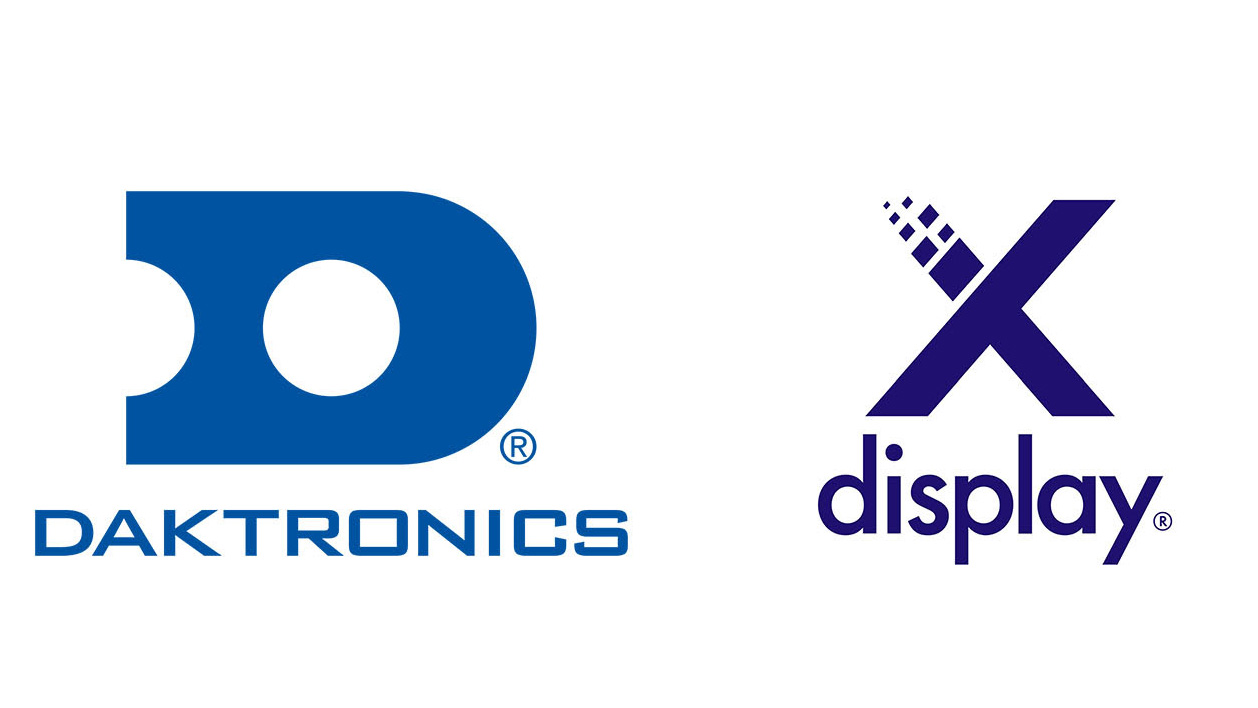Quality of Service Glossary of Terms for AV/IT Professionals
The definitive glossary of tech terms specific to "quality of service "(QoS) in the audiovisual, AV/IT industry.

This Glossary of Quality of Service (QoS) Terms for AV/IT professionals has been provided by Paul Zielie, Consulting Solutions Architect at AVCoIP LLC. This is intended to be a supporting document for the Zielie Deep Dive Series on Quality of Service
#
802.1p - QoS markings standard consisting of 3-bit field called the Priority Code Point (PCP) within an Ethernet frame header when using VLAN tagged frames as defined by IEEE 802.1Q. Specifies a priority value of between 0 and 7 inclusive that can be used by the switch to differentiate traffic including prioritizing traffic on trunk ports.
A
Access Control List (ACL) - A set of rules in a network device to match a combination of values from the network headers which combine to perform a unique “fingerprint” of the traffic to be identified. Once identified a specified action is taken on the traffic. An ACL may include multiple rules, performing the action of the first matching rule. No rules are considered after the first match.
ACL (Access Control List) - see above
Algorithm - A set of step-by-step instructions for a problem-solving or computation procedure, generally implemented by a computer.
Assured Forwarding (AF) - A DSCP marking scheme that sets four priority levels with three increasing drop probabilities within each level. Standardized in IETF RFC 2597
audio sample - The smallest increment of digital audio, representing the amplitude of the signal for a period of 1/(sample rate) seconds. The resolution of the amplitude is specified in bits, typically in multiples of 8. For a typical sample rate of 48kHz, the period of a sample is ~0.000021 seconds.
A daily selection of features, industry news, and analysis for AV/IT professionals. Sign up below.
B
Bandwidth - The capacity of a communication channel to pass data. Usually expressed in bits per second.
Best effort - Best-effort describes a network service in which the network does not provide any guaranteed bandwidth, delay or even that data is delivered.
Buffer - Memory for temporarily storing data. Often used to accept data at one rate and deliver it at another
Burst - Burst time, the duration of a burst
Burst rate - The data rate of a short-term spike in network traffic.
Burst time - The duration of a burst
C
Class - Specific type of data flow which can be differentiated from other traffic
Class map - A set of layer 2,3, and 4 header field values “mapped” to a DiffServ class defining the class characteristics
Class Match - A defined list of protocol header values to differentiate the traffic of the data flow type defining a class from other traffic
Class of Service - (CoS) A common name for 802.1p QoS markings in a 3-bit field in the 802.1Q tag of the Ethernet header.
Class-based Weighted Fair Queueing - (CBWFQ) QoS scheduling method where each class is a separate queue and can specify a reserved bandwidth that is assured to be accessible for that class.
Classification - The process of differentiating specific network flows from other network traffic in order to provide special handling. A differentiated flow is called a class.
Codec - Portmanteau from COder DECoder. An application or device which encodes or decodes a data stream or signal for transmission across a network. Often includes compression, but it is not required. Often used for forwarding audio or video over IP networks.
Converged network - A network where multiple distinct services, for example data, VoIP, and AV distribution share the same network infrastructure. The services be fully converged, sharing common management and helper services, or may be logically isolated, just using the same network hardware.
CoS - (Class of Service)
1) the part of QoS which supports prioritizing packets based on the required level of service, by placing them in the appropriate output queue. packets are forwarded from the queues using scheduling algorithms such as weighted round robin (WRR) or strict queueing. The priority may be set according to the port default, the packet’s priority bit (in the VLAN tag), TCP/UDP port number, IP Precedence bit, or DSCP priority bit.
2) (Class of Service) A common name for 802.1p QoS markings in a 3-bit field in the 802.1Q tag of the Ethernet header.
D
Data Flow - The traffic stream of an individual networking session. Consists of a single protocol. Includes both the headers and payloads and all packets involved in the session. Network traffic is the combination of all data flows.
Differentiated - To recognize a difference
Differentiated Services Code Point - (DSCP) also called DiffServ, is the most common method of marking for QoS today and is considered best practice. Data flows are marked for prioritization with values from 0-64 using the first 6 bits of the IPv4, Type of Service field or the IPv6, Traffic Class field. Used in both switches and routers to identify traffic for special handling.
Differentiated Services - (DiffServ) QoS methods where specific network traffic and data flows are classified and prioritized. Prioritization schemes are created to reflect the needs of the applications and priorities of the organization
DiffServ - (Differentiated Services) A common name for methods using Differentiated Services Code Point for QoS. DiffServ consists of a well-defined set of building blocks from which a variety of aggregate forwarding behaviors may be built. Each packet carries the information (DSCP value) used by each network node traversed to forward it appropriately (per-hop behavior) for that node. DiffServ can allocate different levels of service to traffic on the network using mechanisms such as packet markers, traffic meters, and shapers/droppers.
DiffServ Class - A traffic flow that can be differentiated from all other traffic coming into the port for the purpose of assigning that traffic to a level of QoS.
Drop - The act of deleting network traffic rather than acting upon or forwarding it. May be caused by errors, congestion, late or out of order delivery, or exceeding hop limits.
Dropped packet - An undelivered packet. Lost or deleted during network transmission.
DSCP - (Differentiated Services Code Point) also called DiffServ, is the most common method of marking for QoS today and is considered best practice. Data flows are marked for prioritization with values from 0-64 using the first 6 bits of the IPv4, Type of Service field or the IPv6, Traffic Class field. Used in both switches and routers to identify traffic for special handling.
DSCP Class Selector - DSCP values where the first three bits align to IP Precedence values and the last three bits are zeros allowing for backwards compatibility with legacy QoS infrastructure. Abbreviated as CS0-CS7
DSCP to Queue Mappings - Settings in a switch which configure for each DSCP value which output queue the marker packet should be placed in.
E
Egress - The point at which data exits a device (opposite of ingress)
Egress service interface - The outbound interface of a switch port, which can be configured to provide a separately configured service such as an Access Control List, DSCP marking, or queue scheduling.
Express Forwarding - (EF) an addition to the DSCP Assured Forwarding marking scheme where traffic marked with DSCP value 46 is given the highest priority. Standardized in IETF RFC 2598
F
FIFO - (First In, First Out) QoS scheduling method where the packets are forwarded in the order in which they are received. The equivalent of QoS being disabled.
G
H
I
IEEE 1588 - The Standard for Precision Time Protocol (PTP) A protocol used to synchronize clocks across a Layer 2 network. It achieves synchronization in the sub-microsecond range, making it suitable for synchronizing audio playback through multiple devices without audible comb filters.
Ingress - The point at which data enters a device (opposite of egress)
Ingress service interface - The inbound interface of a switch port, which can be configured to provide a separately configured service such as an Access Control List, DSCP marking, or queue scheduling.
Integrated Services - (IntServ) QoS methods where applications request bandwidth and resource reservations from the network and the network monitors the flow of packets and adjusts bandwidth allocation.
Layer 3 - RSVP, Layer 2 - AVB
Interframe codecs - Video codecs that increase the compression rate by only periodically sending a complete video frame. The rest of the frames use the complete frames as references in their compression algorithm.
IP Precedence - (IPP) A Legacy QoS method where the first three bits of the Type of Service Field in the IPv4 packet indicate a priority level from 0-7. Primarily used in routed networks to prioritize traffic across shared links.
J
Jumbo Frame - An Ethernet frame that is larger than the standard frame size of 1500 bytes. Typically, up to 9000 bytes, but in some cases, even larger frames are supported.
K
L
M
Mapped - A group of elements or qualities associated with an equivalent group, according to a particular formula or model. For example, a list of inputs could be mapped to a particular type of processing resulting in those inputs performing that processing.
Marking - The process of adding QoS values to network packet headers
Matching - The process of comparing protocol header values to a defined list of values to differentiate a specific network flow from other traffic. Generally, all values must be the same to be matched.
Mirror - (Also called port mirroring and SPAN (Switched Port Analyzer)) A configuration on a managed switch where the network traffic to and/or from a port is also forwarded to another port to be analyzed. Often used with Wireshark.
N
Network Time Protocol - (NTP) A protocol used to synchronize with computer clock time sources in a network.
Networked media - Real-time audio and video distributed over ethernet networks, generally used as a replacement for baseband distribution. Networked media uses techniques and protocols of streaming but defines a more specific application.
O
P
Packets per second (pps) - The rate of a network flow using packets as the metric rather than bandwidth. Often used to specify the capabilities of networking devices.
Parallel - Multiple things arranged side by side. Data is forwarded as a group over multiple channels.
Policer - A form of QoS enforcement that limits the bandwidth of a traffic flow by dropping packets once it has reached a bandwidth threshold.
Policy
1) A set of rules defining actions to be taken when an event occurs, or state is reached.
2) (networking) A list of rules on how specified network traffic is treated.
Policy Attribute - A single rule within a policy generally defines the rule for a single class.
Port level - A configuration or action which is individually defined for each port.
Port mirroring - (Also called mirror and SPAN (Switched Port Analyzer)) A configuration on a managed switch where the network traffic to and/or from a port is also forwarded to another port to be analyzed. Often used with Wireshark.
Precision Time Protocol - (PTP) A protocol used to synchronize clocks across a Layer 2 network. It achieves synchronization in the sub-microsecond range, making it suitable for synchronizing audio playback through multiple devices without audible comb filters. Standardized by IEEE 1588
Priority Queueing - (PQ) QoS scheduling method where the packets are forwarded from the highest priority queue with packets. Packets from lower priority queues are only forwarded while higher priority queues are empty. Also called Strict Queueing
PTP - (Precision Time Protocol) A protocol used to synchronize clocks across a Layer 2 network. It achieves synchronization in the sub-microsecond range, making it suitable for synchronizing audio playback through multiple devices without audible comb filters. Standardized by IEEE 1588
Q
QoS - (Quality of Service) a set of methods that allow network devices to be configured to identify traffic that needs to be prioritized and to forward traffic based on the needs and priorities of the organization configuring the network.
Quality of Service (QoS) - see above
Queue
1. (QoS) A sequence of packets waiting to be forwarded. In QoS, each queue contains packets of similar priority.
2. (computing) A sequence of stored data or programs awaiting processing
R
Random Early Detection - (RED) A queue management algorithm in which packets are increasingly dropped as the average queue size grows. This triggers TCP congestion avoidance, reducing overall traffic sent to the link.
RFC 2597 - The IETF standard for Assured Forwarding (AF). A DSCP marking scheme that sets four priority levels with three increasing drop probabilities within each level.
RFC 2598 - The IETF standard for Express Forwarding (EF). An addition to the DSCP Assured Forwarding marking scheme where traffic marked with DSCP value 46 is given the highest priority.
S
Scheduling - A method of giving priority to selected network traffic minimizing the occurrence of delay or loss of high-priority traffic during periods of network congestion. The most common scheduling algorithms are Weighted Round Robin (WRR) and Priority (Strict) queueing
Serial - Arranged in an order one after another. Data is forwarded one bit at a time over a single channel.
Service Interface - An inbound (ingress) or outbound (egress) interface of a switch port, which can be configured to provide a separately configured service such as an Access Control List, DSCP marking, or queue scheduling.
Shaper - A form of QoS enforcement that limits the bandwidth of a traffic flow by buffering it and forwarding at a set threshold. Allows bursty traffic to not flood links without dropping packets.
SPAN Port - SPAN (Switched Port Analyzer) (Also called mirror and port mirroring) A configuration on a managed switch where the network traffic to and/or from a port is also forwarded to another port to be analyzed. Often used with Wireshark.
Strict queueing - QoS scheduling method where the packets are forwarded from the highest priority queue with packets. Packets from lower priority queues are only forwarded while higher priority queues are empty. Also called Priority queueing.
Switch level - A configuration or action which is defined for all subsystems (for example ports or VLANs) of the switch at the same time. Subsystems will all have the same configuration
Synchronize
1. Adjust the time-of-day clock of a device to have the same time as another device
2. Adjust the clock rate of day clock of a device to have the same clock rate as another device. For example, The sample clock on an analog-to-digital converter.
T
Tail Drop - A queue management algorithm is used in QoS to decide when to drop packets. Any incoming packets are dropped when the queue is full.
Traffic Class - The 8-bit field reserved for QoS marking in the IPv6 header used for Differentiated Services Code Point (DSCP) values and Explicit Congestion Notification (ECN)
Trust marked packets - A setting on an inbound network interface to
Type of Service - An IEEE standard for providing quality of service (QoS) in Ethernet networks. The standard uses packet tags that define up to eight traffic classes and allows switches to transmit packets based on the tagged priority value.
Type of Service - The 8-bit field is reserved for QoS marking in the IPv4 header. May be used for IP Precedence (IPP)
U
V
W
X
Y
Z

Paul Zielie, CTS-D,I is a multi-disciplined generalist with 30 years of experience designing and integrating IT, telecommunications, and audiovisual (AV) solutions.
Over the course of his career, he has had most of the roles in the AV/IT spectrum including customer/end user, IT owner, integrator, designer, managed service provider, distributor, pre-sale specifier, executive, and manufacturer. Because of this extensive real-world experience in every facet of the AV/IT lifecycle, he brings an almost unique perspective on the consequences, both intended and unintended of how product and project features are implemented.
“What I really do for a living is solve problems, little or big, with appropriate technical solutions. I believe that technology is in service to organizational goals and workflow, and not an end in itself, and use that as a guiding principle in my design efforts.”
He is a prolific writer and speaker and was the recipient of the 2015 InfoComm International, Educator of the year and was inducted into the SCN Hall of Fame in 2020. As a consulting solutions architect for AVCoIP LLC, Zielie specializes in working with AV manufacturers to create products that meet enterprise customers' IT requirements.
